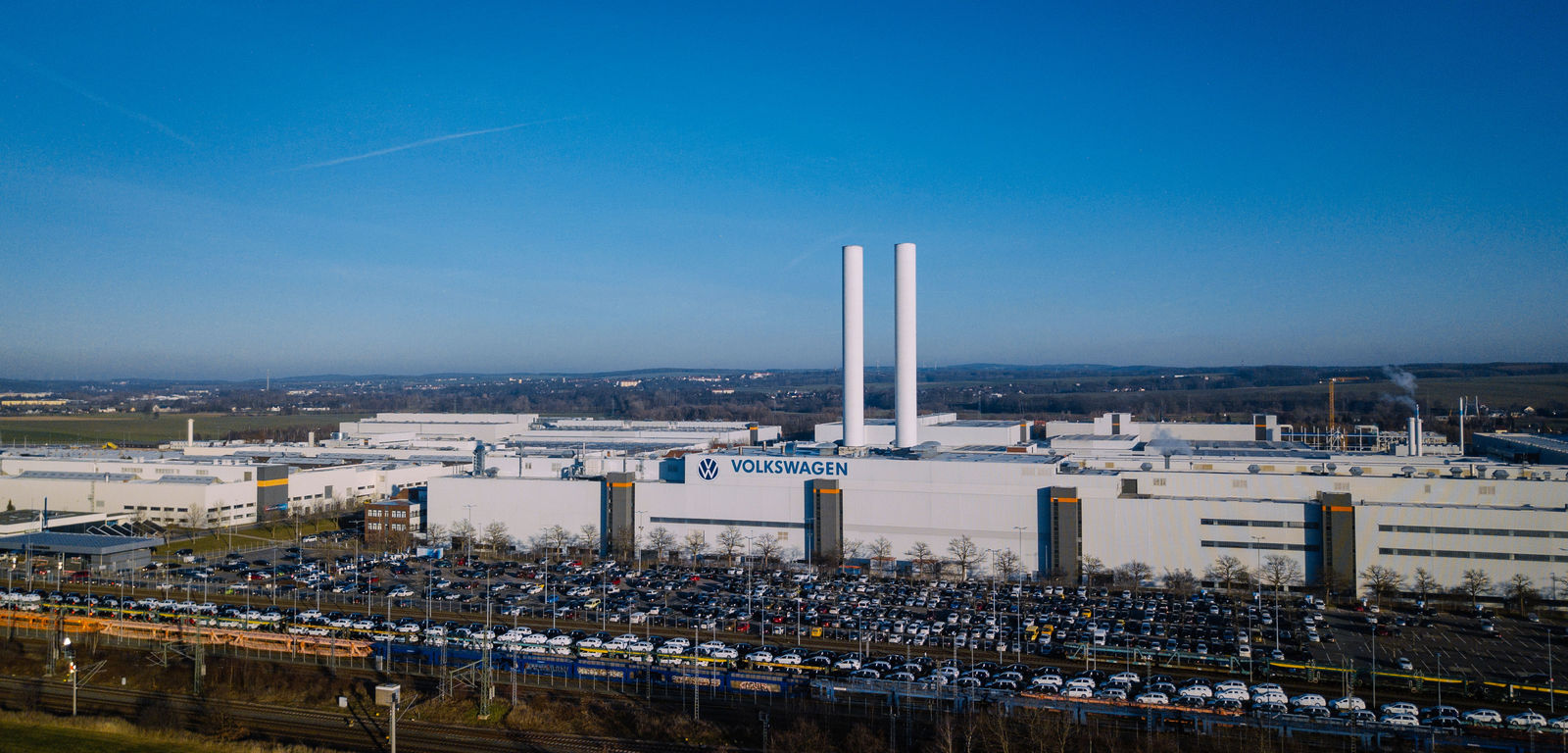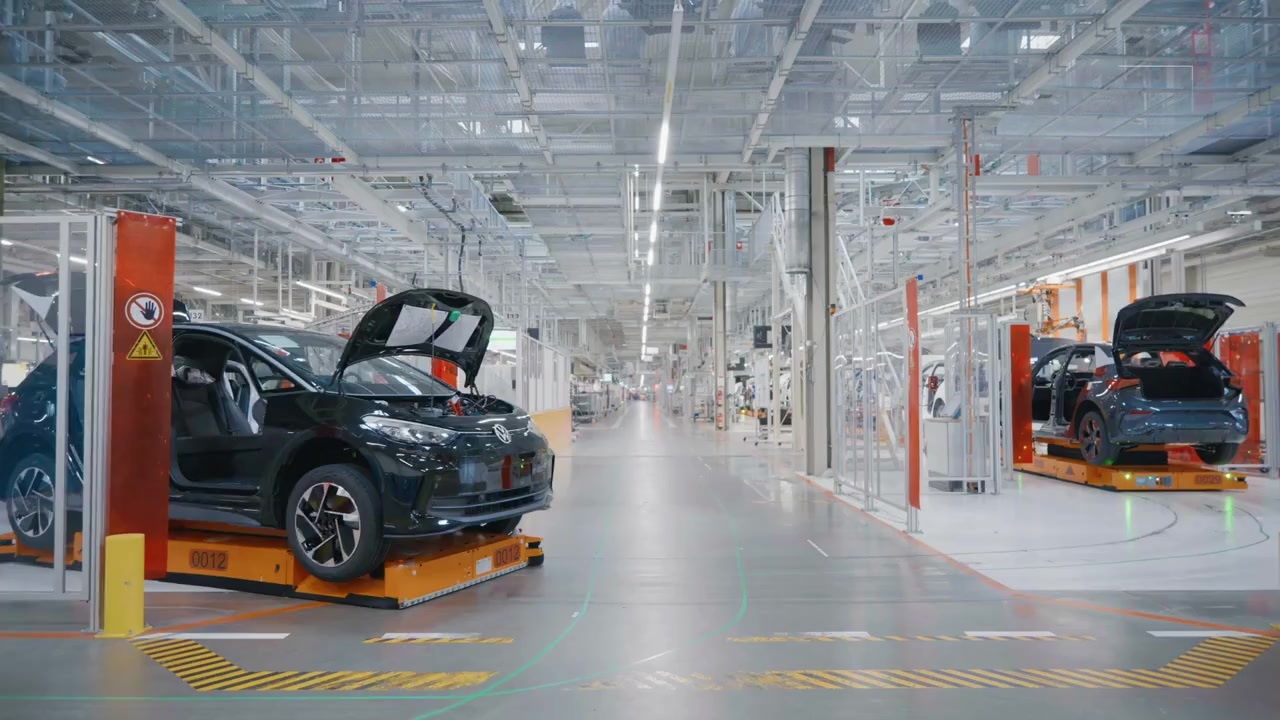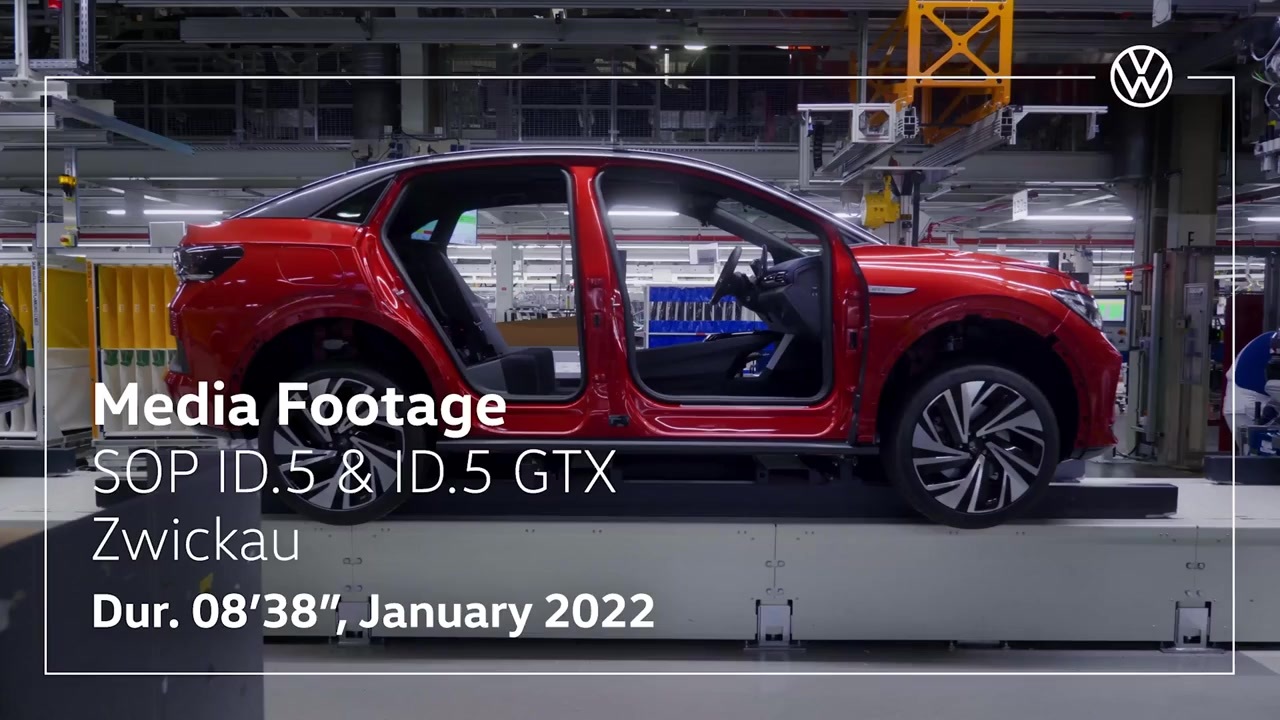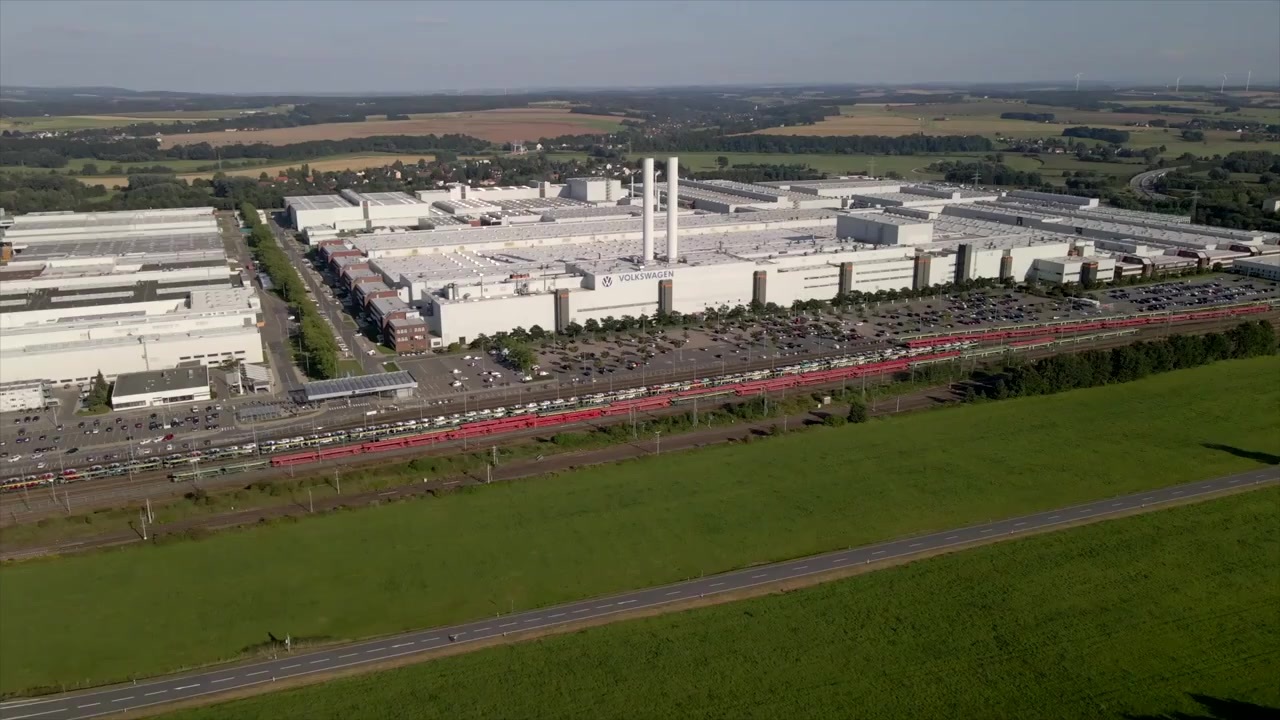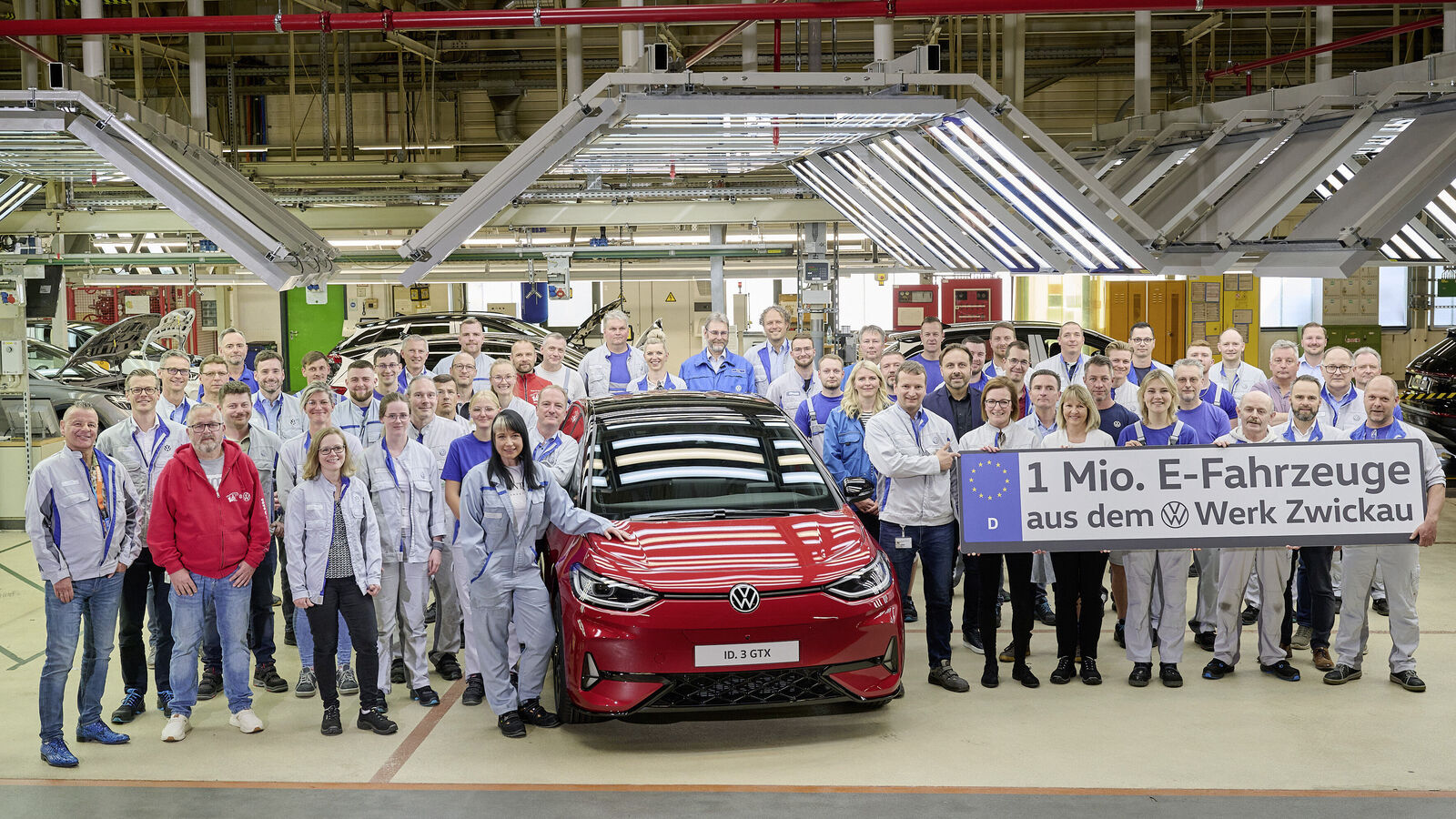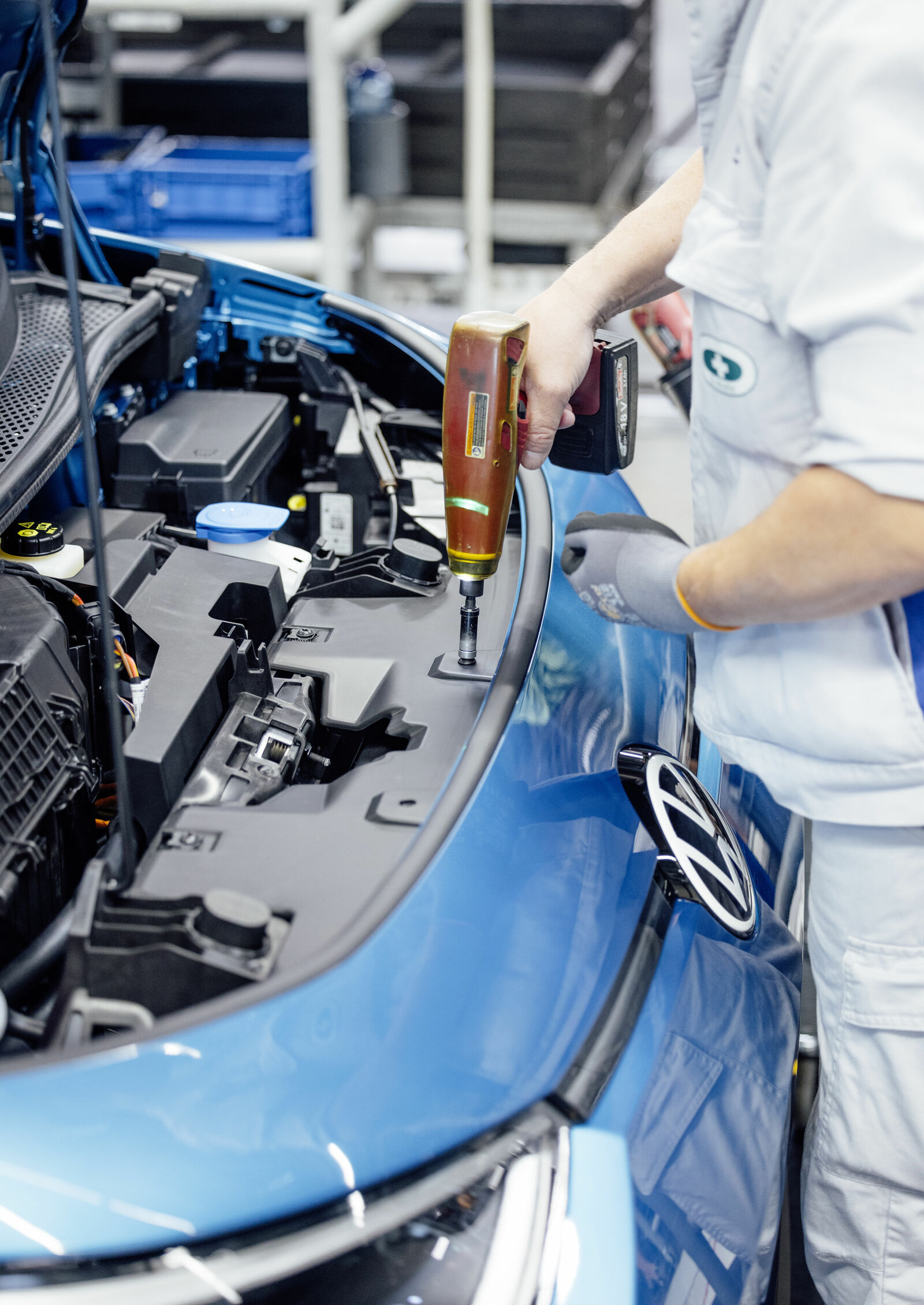The Volkswagen brand is pushing ahead with its electric offensive: The Group’s largest and most efficient electric vehicle plant in Europe is located in Zwickau. Since the start of 2022, six electric models have been produced in Zwickau by three Group brands. As the world's first volume manufacturer ever, Volkswagen successfully converted an entire plant from combustion engine-based to electric mobility in just 26 months.
Zwickau
Press releases
-

ID.3 GTX FIRE+ICE: Volkswagen starts series production in Zwickau and Dresden
Today the series production of the ID.3 GTX FIRE+ICE has started in Saxony. The 1,990 vehicles roll off the production line at the Zwickau vehicle plant and the Transparent Factory in Dresden. The model was developed in collaboration with the performance sportswear brand BOGNER FIRE+ICE, part of the Munich-based luxury sports fashion company BOGNER, just like the legendary Golf II Fire and Ice, which became a surprise success in the 90s and now enjoys cult status among fans. In tribute to the original model’s debut year, only 1990 units of the ID.3 GTX FIRE+ICE will be available to order. Prices in Germany start from €56,020. -

The one millionth electric vehicle rolls off the production line at the Volkswagen plant in Zwickau
After around five and a half years of all-electric vehicle production, the Zwickau vehicle plant has cracked a magic barrier: This week, the one millionth electric car rolled off the production line at the multi-brand site. The anniversary vehicle is an ID.3 GTX Performance in Kings Red Metallic. The car will be delivered to a customer from Bavaria in a few weeks at the Transparent Factory in Dresden. -
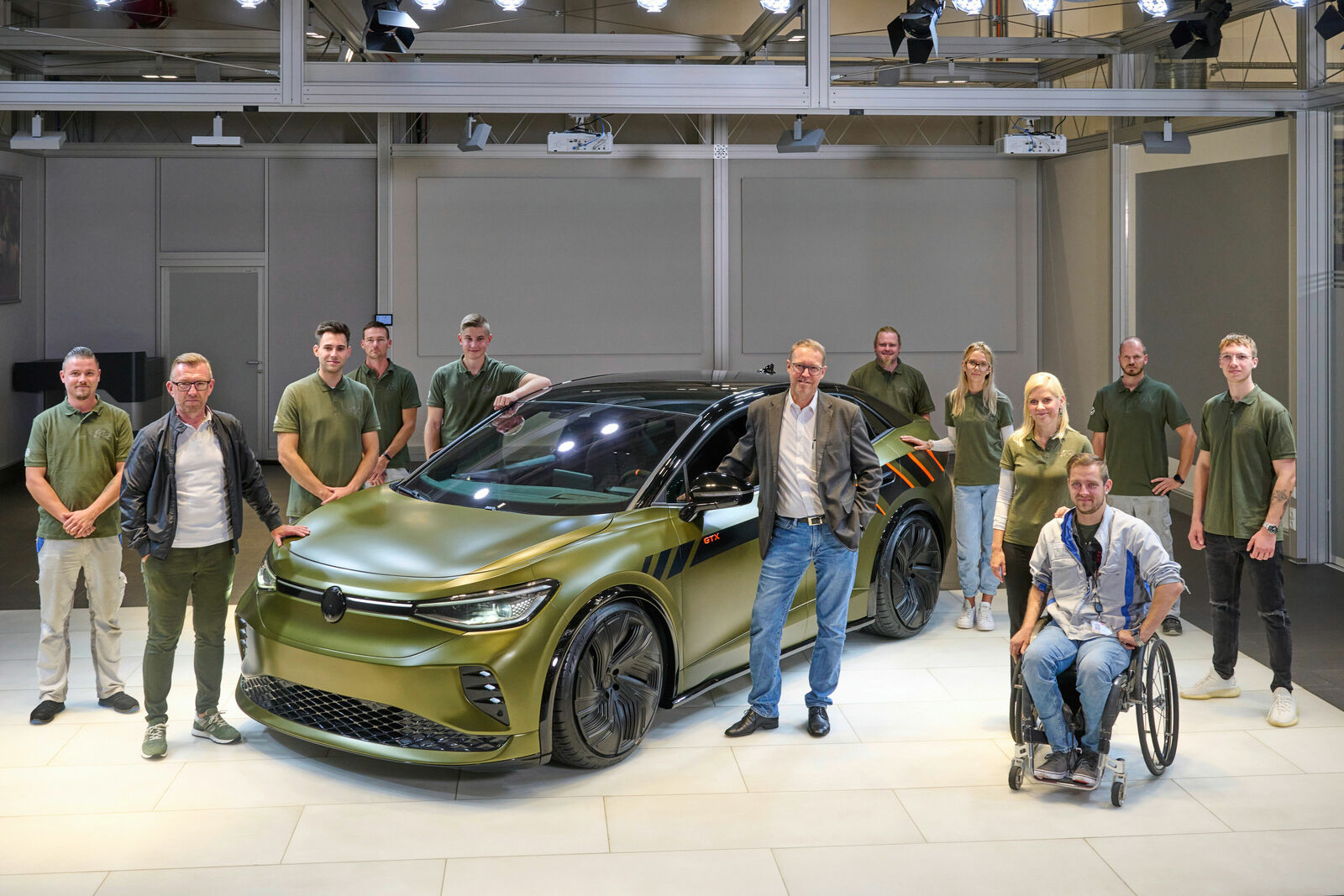
Premiere at the ID. Meet: apprentices from Volkswagen Sachsen present ID.5 GTX „Xcite“ show car
Volkswagen presents today the ID.5 GTX „Xcite“ to the public for the first time today at the ID. Meet in Locarno (Switzerland). This vehicle is an individual product made by apprentices at Volkswagen’s three locations in Saxony, at Zwickau, Dresden and Chemnitz. For one year, 14 of the best budding specialists worked on a project to demonstrate their skills with considerable creativity and responsibility under expert supervision – from the first design through the adaptation of the bodywork and paintwork to technical commissioning. In addition to sustainability, reflected by vegan leather in the interior, the main focus of this year’s project was on holistic mobility. The ID.5 GTX „Xcite“ already has on board an electric skateboard for the last few meters to the driver’s destination. This is the eighth project of its type completed since 2014.
